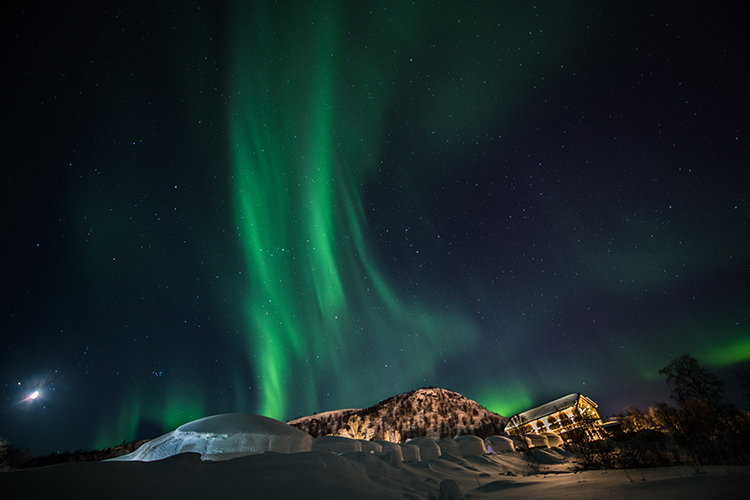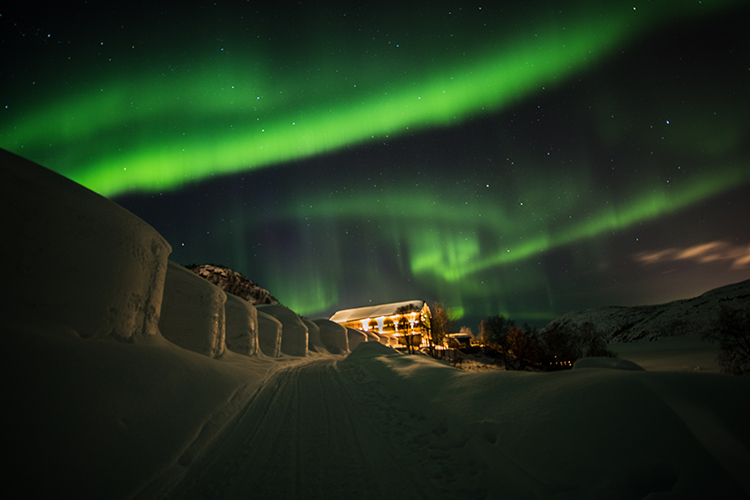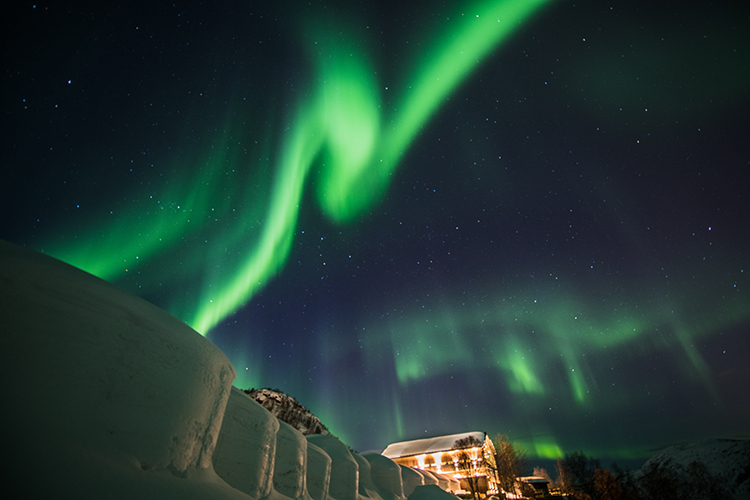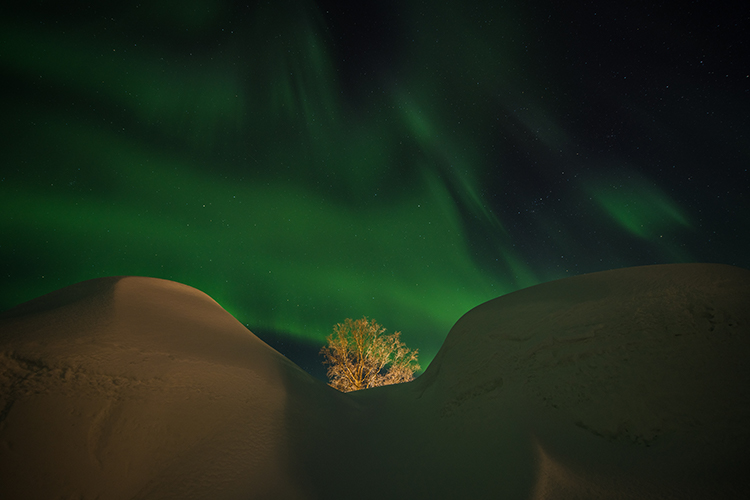Northern Lights Phenomenon Explained
Posted by Kevin Clement
in Of Interest and Polar Regions
The northern lights phenomenon is a spellbinding experience. Apex Expeditions leader, Kevin Clement, explains this miracle of nature, witnessed by travelers on our recent visit to Finnmark Plateau in northern Norway.
“To understand the northern lights,” I said to my group, “picture yourself in Las Vegas.”
We had just come in from the frigid darkness of the Arctic night that surrounded our lodge on the Finnmark Plateau of northern Norway. We had been getting our first jaw-dropping views of the aurora borealis. It had been a dazzling display, with waving curtains of lights in colors that had gone beyond the entry-level whites and greens and into pinks and even reds. After a span of time that no one had marked, the curtains had faded and dispersed—they tend to come and go in cycles. The spell was broken, or at least weakened, and we had come inside.
The group was still recovering. We were warming our hands by holding steaming cups of hot chocolate and easing our cramped neck muscles, but also, we were recovering from the spell. Even now I find myself mesmerized by this miracle of nature, but to see it for the first time can be a spellbinding, even transformative, experience.
What causes the lights?
But soon their ever-present inquisitiveness had begun to surface, and someone had asked me to explain the phenomenon—what causes the lights? And the variations in color? But when I brought up Las Vegas, they looked dumbfounded all over again.
Now, I don’t know what you think of when you think of Vegas (I went on)—but let’s keep this clean. One of the town’s most obvious features is its hyperabundance of neon lights. To get neon gas to produce light, you run a stream of charged particles (in this case, an electric current) through it. Its molecules absorb the charge, then shed the extra energy in the form of photons, which we perceive as light.
The mechanism is the same with the aurora. The charged particles are provided by the sun, which sends them off in massive streams called the “solar wind.” Most of those that strike the Earth, however, do not penetrate directly to the surface. They are intercepted, redirected, and channeled by the Earth’s magnetic field. So, they flow to the north and the south along the magnetic lines of flux.
You might remember seeing a diagram of these lines in one of your grade school science textbooks. The Earth functions as a gigantic electromagnet, with one end at the North Magnetic Pole, and one at the South. The diagram showed lines running parallel with the Earth’s surface until they got near to the Poles, and then turning to descend towards them.
The charged particles follow the same course, streaming along outside the atmosphere, until they begin to descend with the lines of flux. There, in the far North and South, they collide with the molecules of the upper atmosphere. The molecules are “excited”, as the physicists say, and begin to fluoresce—and the miraculous fairy lights are born.
Northern lights phenomenon seen in multiple colors
One other thing you need to know about neon lights: they are not all filled with neon. Electrified neon gas gives off an orange glow, but if you want other colors, you have to use other gases. It’s the same for the northern lights: different component gases of the atmosphere give off different colors of light when energized by the solar wind. High-altitude oxygen, the first to get in the way of the descending particles, glows greenish-white. If the wind is strong enough, some particles will penetrate further, down to the altitude where nitrogen is more prevalent—and nitrogen fluoresces red.
By this time, we had finished our hot chocolates, and, we hoped, given the aurora time to cycle back up again. We bundled up and stepped out into a world that in no way resembled Las Vegas, to watch a display infinitely more amazing than any number of neon lights.
Learn more
Find out more about Kevin and perhaps join him on one of his upcoming expeditions.




